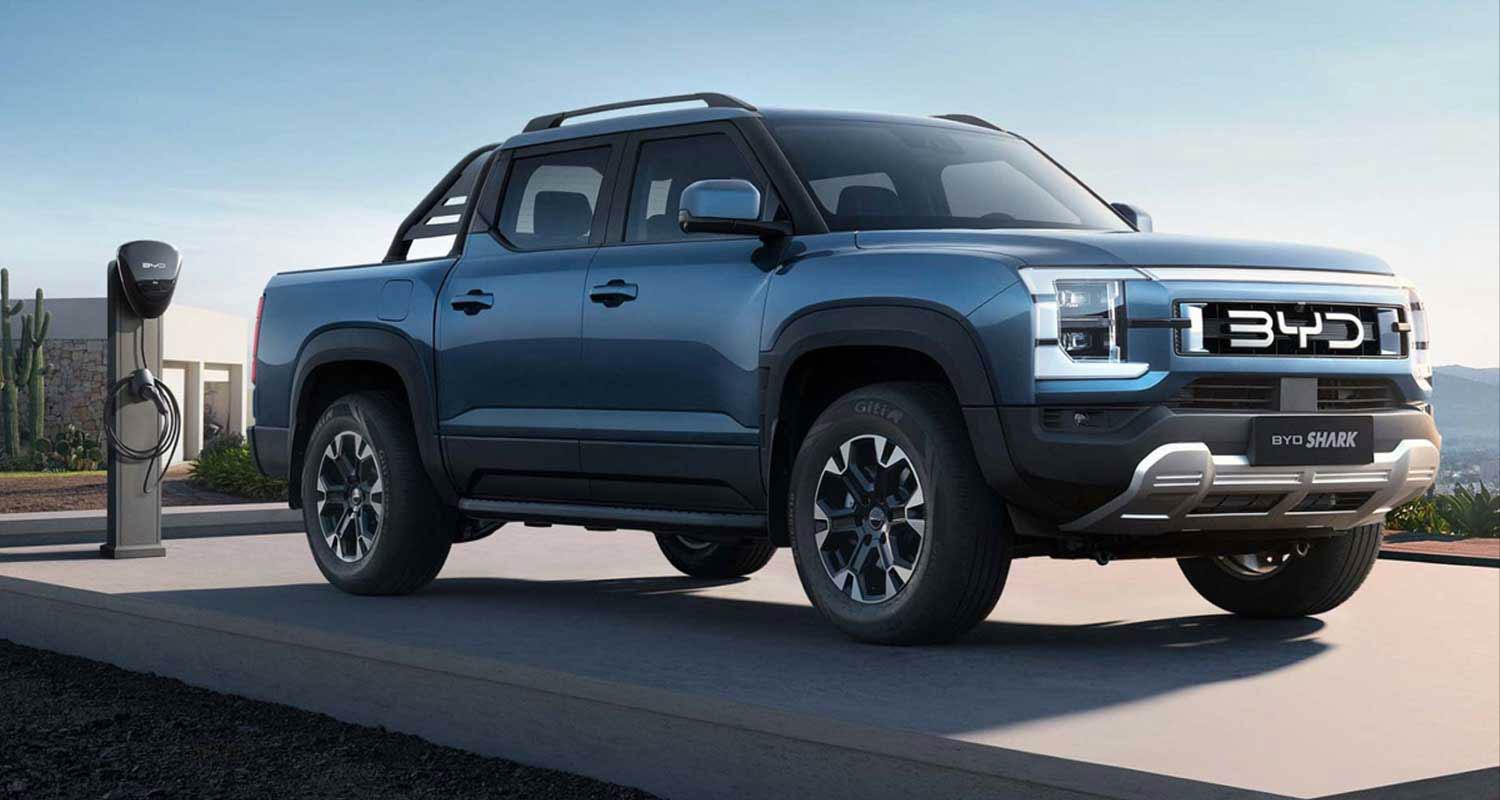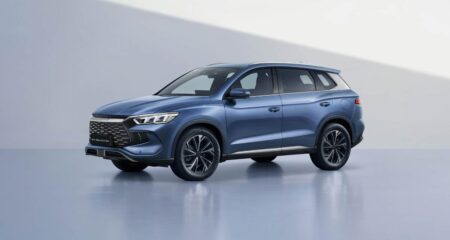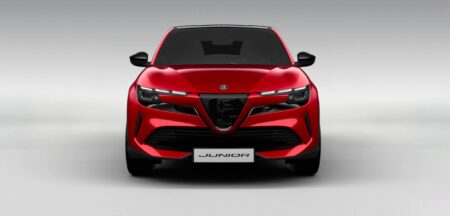I am not sure why they call it a “6” either, but if a bakkie branded as a “Shark” comes with a colour option of “Great White”, it has my immediate and unfettered attention.
The retail price of the BYD Shark 6 is R960 000, so this is not your entry-level bakkie. China’s BYD is pitching the Shark 6 directly at the big players in the sector: the Toyota Hilux RS and the Ford Ranger Raptor. (And maybe Jeep’s Gladiator, Volkswagen’s Amarok, and Isuzu and the Nissan Navara, too.) And yet the Shark stands alone because of the unique nature of what it is.
It was launched officially last week by BYD along with two new SUVs: the Sealion 6 and Sealion 7. I’ll deal with the SUVs under separate cover because they’re rewriting standards in rear legroom and in performance.
For now, though, it’s about South Africa’s new most-powerful bakkie, which offers 321kW and 650Nm in electric AWD dual-motor setup.
Yep, it’s an EV.
But this one is different. It has automated electricity-making included via, and you’re going to love this … petrol. Yes, it’s a hhhhhybrid. A plug-in hybrid, to be exact, with about 100km of EV-only range and a 1.5l turbo-petrol engine that’s there to generate electricity for the battery when needed. The 60l (!) fuel tank gives the Shark a claimed combined range of some 800km.
This makes a difference. Some might say all the difference.
Maximum power
Those of you of my tribe have already done the mathematics: 321kW and a 60l tank and an 800km range equates to a fuel consumption of 7.5l/100km. Run that through your brain again, and then check what Ford’s new 3l, V6 Raptor’s fuel consumption is again? Umm, I’m just going to say it’s more – a lot more – and leave it there.
To be fair, BYD claim 9.5l/100km when running on fuel only. How that gets you to 800km remains one of those anomalies to be verified in the real world as and when we get our hands on one for a formal review.
So, what we have is a petrol engine charging a battery when it is flat to power a 2.7t double cab via two electric motors that operate the AWD.
Read: Tesla rival BYD is going big in South Africa
It gets confusing, however. At some point, the petrol engine can also send some power to the front wheels, but this only kicks in when:
- It’s needed;
- When driving faster than 80km/h;
- When then petrol engine is running at optimum efficiency for forward motion; and
- There is still no gearbox which means it’s all a little opaque and just how much power is sent remains unknown at this stage.
Given that the maximum power from the petrol engine is 115kW and that it will be using some if not most of that to charge the batteries, I cannot see the power being delivered to the front wheels as being massive. Think of the Shark as an EV primarily.
We drove it in the parking lot at the recent launch under wet conditions. So, yes, it’s quick. Faster than a Raptor? We will see, but my gut instinct is that I’ll wager a beer that it is.
 Is it better offroad? No way. Does it matter? It depends on the buyer.
Is it better offroad? No way. Does it matter? It depends on the buyer.
I say that because the all-important ground clearance doesn’t have the impressive numbers boasted by the Raptor and many of its other rivals. BYD hasn’t bothered with building an overland monster but has gone the route of adding clever electronics to compensate for that wheel in the air occasion as well as different terrain attack.
As for the electronics, there is nothing that gets close. From a decent heads-up display that gives you what you need to know without having to look down at dials to heated and vented electric seats and a Dynaudio sound system, the accessories listed as standard on the Shark sets new standards, even for the Chinese. Of course, there is the big rotating centre screen and a screen for the driver, but BYD does give you physical buttons, too. How effectively they all work together remains to be seen…
BYD has just about thrown the kitchen sink into the Shark 6, and interesting to note is that you can could also power the sink’s disposal unit from the 220V, three-prong Saffer plugs supplied – with up to 6kW of draw on tap.
Forget 12V fridges and freezers: pack your own from the kitchen, your big-screen TV and you might as well add your aircon unit and chainsaw because you just never know, right?
Another party trick is that the rear seats can recline – by 27 degrees. And the floor plan is flat. There is space at the rear that has to be class-leading and the cabin is well balanced between luxury and being hard-wearing. It is a bakkie after all and it shouldn’t get scared of a little dirt and mud. Time will tell on that front.
Imposing
Looks-wise, you’re not going to mistake it for anything other than what it is. From the front it’s the most imposing – from the rear, well, a little less so if I’m honest. BYD says you can drop the tailgate four different ways and it is assisted. It was raining too much to try it out when I drove it, but, yes, there are two fuel caps: one for plugging in the battery and one for filling the fuel tank.
Remember that if you do less than 100km between charges, your fuel consumption will be 0l/100km. Nadda. Niks. Zilcho. You’re checking into the thriving village of Squatsfontein. Your fuel will go vrot.
Read: BYD flying high while Tesla flounders
That said, the Shark 6 has a relatively small battery at around 30kWh, which means your home 7kW charger can refill it in about five hours. It’s also a BYD blade battery, which means it’s easier to repair and, most importantly, it should be as safe as houses. You could stick nails into the thing without cause for concern. BYD also gives you an eight-year, 200 000km warranty on the battery.
The Shark 6 comes with a five-year 100 000km maintenance plan. Service intervals for the petrol engine are not listed – it’s a question I still need answered. You also get a 7kW charging unit for home included, a 2kW V2L (vehicle to load – ie. plug socket), a 2.2kW portable charger for when you are on the road (and all you can get is a three-pin South African plug point) and you get a rollbar and tow hook for good measure.
 It’s all starting to look quite good, isn’t it?
It’s all starting to look quite good, isn’t it?
But there are some downsides. The servicing centres are few and far between. BYD is adding as fast as it can but it’s going to take time to match the established brands.
The massive weight of the Shark 6 means that load capacity is kept to 835kg. Towed (braked) capacity is a respectable 2.5t. If these are important to you then, by all means, take them into consideration. It wouldn’t bother me in the slightest. But then again, I am of the opinion that hotels were invented so we didn’t have to camp.
In summary, then, BYD appears to have a real winner on its hands. Admittedly, I’d need time to test the Shark 6 in detail. But for South Africa right now, I’m going to go out on a limb and suggest that this just might be the country’s new champion bakkie. – © 2025 NewsCentral Media
Get breaking news from TechCentral on WhatsApp. Sign up here





